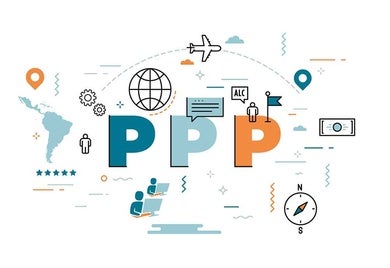
Can innovation testing help boost private sector development in Latin America and the Caribbean?
Knowledge is increasingly seen as a key factor in promoting higher levels of productivity, competitiveness, and growth of firms. Despite this, innovation testing remains an untapped resource that can help boost private sector development in Latin America and the Caribbean. What is the best pricing scheme to maximize the demand for a product? Can technology increase the productivity of providers in a value chain? What type of product design can have the largest demand? What are the benefits to society or wider development impacts generated by a new product or service? These are questions that could be answered with an innovation testing exercise. What is innovation testing? We refer to innovation testing as the set of studies that include a randomized control trial in which an innovative approach is being tested. The final objective is to understand the cause and effect relationship between an innovative business practice or change (e.g. new product, new business approach, innovative marketing strategy, etc.) and the effects generated by it in an outcome of interest or a target population (e.g. increased demand, change in client behavior, etc.). Testing is conducted by empirically constructing a counterfactual or control group that tells you what would have been the situation in the absence of the proposed change. At the center of testing, there are considerations of cost-effectiveness, profit maximization, scalability, replicability, and/or development impact. For a long time, the private sector has been an important engine of knowledge generation and there are multiple examples of this. Back in 1842, entrepreneurs in the manufacturing industry were already experimentally testing the impacts of inorganic and organic fertilizers on crop yields, marking the beginnings of the chemical fertilizer industry. In the pharmaceutical sphere, private sector discoveries account for 80% to 90% of pharmaceutical products in the market and the industry is regularly conducting clinical trials of new drugs before introducing them into the market. Moreover, marketing companies are constantly relying on AB testing techniques to identify changes to web pages or advertisements to maximize an outcome of interest. For example, Google+ knew that with a full-screen ad that encouraged mobile website visitors to download the app, 69% of people left the mobile website right away, while 9% of the visitors clicked on the “Install” button. After they implemented and tested a nicer, less obtrusive app ad, the 1-day active users on mobile increased by 17%. Why consider innovation testing? For achieving best results managers are increasingly moving away from guessing when doing business towards using data-driven evidence to guide their decisions. Innovation testing can bring important benefits, both in terms of learning and accountability. For those in an expansion or starting phase, it can bring important learning lessons on what works and what doesn’t work before scaling up. For those seeking to explore new approaches to doing business, it can give them responses on how to design and select the business strategy that is the most cost-effective. For those seeking to generate evidence about the wider impacts or benefits they generate in society, testing can provide them with rigorous empirical evidence about their work. This is important, in this growing trend of impact investors seeking to generate social and environmental impacts beyond financial returns. It is also valuable for financial institutions that are increasingly seeking transparency and accountability. Despite the knowledge generation appetite coming from the private sector, the use of these methods remains widely concentrated in large companies and mostly in developed countries. The reality is that conducting innovation testing exercises requires technical expertise, time, and resources. In recent years, multiple firms have embarked in innovation testing exercises and multiple support platforms have emerge to help conduct these analyses. For example, Google Analytics offers support for online experiments to test which version of a landing page results in the greatest improvement in a metric value. Amazon Machine Learning Research has been conducting studies to scale-up AB testing techniques by proposing more efficient tools that help with multivariate testing and with learning how to implement ideas to reach the highest number of customers. The financial sector has also been very keen to use casual testing approaches to better tailor financial products and services to customer’s real behavior and to improve financial-decision making processes. How do we promote innovation testing? Development Banks working with the private sector bring new opportunities to support their clients with technical skills to conduct innovation testing while simultaneously providing financial additionality. Innovation testing is a key element in the IDB Invest Development Effectiveness agenda, as reflected in our annual Development Effectiveness Overview (DEO). Our focus when supporting causal testing is twofold: helping boost private sector growth while maximizing development impact, so that this becomes in a win-win opportunity for the region. We have exciting testing projects in progress related to the impacts of manufacturing companies promoting healthy practices; the effects of using machine learning techniques to increase farmer’s productivity in agribusiness value chains; and the use of technology to improve debt repayment and savings among clients of financial institutions, among others. There is still much work to do in Latin America and the Caribbean and the first step comes from the private sector demanding more hard evidence and business intelligence. This, coupled with continued support from experts in these techniques can only strengthen and boost private sector development in the region. We invite you to collaborate with us and learn more about our work at our recently launched Development Through the Private Sector Series. To know more download our first publication here. Subscribe to receive more content like this! [mc4wp_form]

Digital highways and their similarity to transportation highways
Poor bandwidth infrastructure is like traveling on a dirt road. The technological disruption we are experiencing is something unprecedented. When we compare it to the industrial revolution and the enormous impact it has on per capita gross domestic product (GDP), we can assert with total certainty that this digital revolution is changing everything, from the corporate, to the social, and even the political order. Quite rightly we call it the industrial revolution 4.0. This explosion of technology occurs in the context of the world of data, data that can only be moved with the necessary infrastructure of digital networks. Thus, just like in any traditional highway infrastructure project, without routes to permit the movement of trucks, buses, and automobiles, we could not connect destinations, trades and people. In the world of technology, data would be the means of mobility like automobiles, and networks would be the digital highways or routes available in a country, which is directly determined by the country’s regulatory framework and capital investments in the country made by mobile or satellite telephone service operators. To put the importance of the digital highway in perspective, and using the example of Jose Maria Alvarez-Pallete, CEO of Telefónica España: “It took landline phones 75 years to reach 100 million users and it’s taken Pokémon Go 23 days. Why? Because if networks are digitized, the capacity to distribute a digital product is immense.” In order for companies like YouTube, Airbnb, Netflix and Uber —to cite a few— to offer their services and connect data, information, services and products, it is vital to build and invest in an adequate digital highway. The data coming from these digital highways no doubt have the potential to improve lives and Jose Maria Alvarez-Pallete summarizes this as follows: “Analog life will merge with digital life. Buying patterns, how cars are driven, gas, water and electricity meters, microwaves, the refrigerator, the dishwasher…everything will be connected to the Internet and transmit data.” Thus, we must have digital highways so that this exponential quantity of data can be processed. To ensure the positive effects of the 21st century’s digital economy, constructing and investing in those digital highways must be the priority for economic development and social inclusion in Latin America and the Caribbean. IDB Invest has invested and will continue to invest in the region in projects that help to expand the digital highway, because we know that 10% penetration by broadband has an average economic effect of 2% to 3% on GDP and 2.6% on productivity. Subscribe to receive more content like this! [mc4wp_form]

What have we learned after a decade of public-private partnerships in Latin America and the Caribbean?
Until the end of 1990, Latin America and the Caribbean was the region with the greatest proliferation of public-private partnerships (PPPs). At that point, investments plummeted, partly due to negative reactions caused by its deficient implementation. In 2005, thanks to the joint efforts of public, private sector, and multilaterals, PPPs became again a widely used tool. Driven by the fall in commodities prices, the increase of fiscal deficits, and the improved conditions for implementing PPPs, many countries established specific institutions and strengthened their regulations. As a result, investments through PPPs grew almost five times, from US$8 billion in 2005 to US$39 billion in 2015. In barely one decade, Latin America and the Caribbean has registered US$361.3 billion in investments for almost 1,000 infrastructure projects through PPPs, primarily in the energy and transport sectors. PPPs potentially can help to overcome some of the public-sector limitations but they also raise concerns. Large-scale projects involve many technical, financial, environmental, and social risks. PPPs demand greater attention to risks assignment, conflict resolution, and the analysis of “value for money.” They also require institutional development that takes time to consolidate and, when it is poorly done, can even increase costs and reduce services or its quality. Transparency is also key to mitigate the risk of corruption, which has become more visible in Latin America and the Caribbean in recent years. In this context, multilateral development banks can play a key role supporting the development of proper environments for attracting private investment, supporting independent projects preparation, and helping to bridge financing gaps. These banks, also have a potential comparative advantage: their ability to be directly involved with the public and private sectors. 10 keys for strengthening the multilaterals’ support for PPPs The Office of Evaluation and Oversight has reviewed IDB Group support for PPPs in infrastructure projects at three levels: favorable environment, project preparation and financing, besides other development banks’ experience. These banks financed a small (3%) but considerable proportion of PPP’s investment in Latin America and the Caribbean. The IDB Group provided the most financing (35%), among these entities, with 145 approved operations for US$5.8 billion between 2006 and 2015. Based on our conclusions, the Evaluation of Public-Private Partnerships in Infrastructure, published last March presents 10 recommendations: Specific diagnostics: identify and evaluate potential demand for PPPs by country, including analysis of infrastructure needs in the sector, PPPs environment, fiscal limitations and risks, and type of support needed by the governments. Priorities: include a general framework to determine which countries and sectors need support, type of support needed, and define priorities. Focal point: establish a PPP focal point with sufficient authority and resources to promote collaboration among all parties involved in the institution. Capacities: do an inventory of existing capabilities, identify what is missing, and try to attract and maintain the necessary capabilities. Incentives: reform the incentives, granting rewards when private investors’ funds are mobilized and creating incentives for collaboration. Advisory services: Analyze infrastructure projects in the pipeline, and advise countries regarding the most suitable delivery model, regardless of the sector that will originate the operation. New products: Explore the use and development of new financial and advisory products tailored to the countries’ specific needs, such as local currency financing, advisory services, specific instruments supporting subnational governments, and project preparation mechanisms. Results framework: examine the value for money of PPPs operations, the quantity and quality of the services provided, costs to the taxpayer and the user and its sustainability, in addition to evaluating whether critical environmental and social objectives have been met. Knowledge: Design a specific knowledge strategy on PPPs to systematically capture and file the results of operations and lessons learned. Lessons learned:Systematically incorporate lessons learned by your own organization and other banks on the design and implementation of new PPP operations. Many Latin American and Caribbean countries with solid capacity for implementing PPPs have an extensive list of potential projects, and practically all the larger countries have an infrastructure investment program in which PPPs play a fundamental role. Moreover, since in some of the region’s most important economies the ratio between private investment and gross domestic product (GDP) continues to be low, there is a considerable margin for new projects. The development banks are well positioned to play a fundamental role in these future PPPs, providing support to ensure their suitability in economic, environmental, and social terms, to generate favorable environments that attract private investments, and to close the financing gaps. Only if these recommendations are implemented will we be able to contribute to a wave of successful PPPs and avoid the negative reactions we have seen in the past. The IDB Group has accepted the recommendations and is ready to put them into practice. Subscribe to receive more content like this! [mc4wp_form]

Tourism development through PPPs: An opportunity to generate employment in Latin America and the Caribbean?
Tourism is one of the world’s largest industries, particularly in terms of employment. This industry generates one out of every 11 jobs in the world, represents 10% of gross domestic product (GDP) worldwide, and 7% of exports, according to the World Tourism Organization. International arrivals around the world grew from 25 million in 1950 to more than one billion in the last few years, a period during which arrivals in developing countries exceeded those in developed countries. But what are the characteristics of employment in this industry? Why are coordinated public-private investments needed? How can we measure the impact of an investment in tourism on employment? Does investment in tourism always have positive effects on employment? Tourism and employment One of the main reasons why the developing countries are so interested in the tourism industry is its job creation potential. Expansion of the tourism industry generates direct, indirect, and induced jobs. Besides, it is a diverse and labor-intensive sector, and thus an effective generator of a wide range of job opportunities. Tourism employs more women, young people, and people with limited education than most industries, promoting an environment of inclusion and empowerment for vulnerable groups. In addition, given its low barriers to entry, this industry provides investment opportunities for entrepreneurs to start small-scale businesses and hire workers. The need for coordinated public-private investments The economic benefits of tourism do not usually reach their optimum (social) level with isolated private sector investments alone. The geographic concentration — dependence on natural and/or cultural attractions — and goods and services complementarities characteristic of this industry highlight the importance of factors like economic agglomeration effects, spillover effects, and externalities. In this context, investment decisions are interrelated so the potential benefit of a specific investment depends on the complementarity of other investments. Thus, without adequate coordination among investors, the market fails to allocate resources optimally. For example, hotel owners may under-invest in hotel capacity as their returns depend on the investment decisions made by restaurant owners and other investors in recreational and cultural activities. Similarly, public investment in infrastructure for transportation and tourism — such as roads, lighting, restoration of the historical and cultural heritage, among other investments — is limited by lack of coordination with the private sector, to generate an adequate flow of tourists. A recent experience in Latin America and the Caribbean Between 2003 and 2010, the government of the province of Salta implemented a series of interventions to generate a structural change in the tourism industry and create jobs after Argentina’s economic crisis in 2001. These investments required a high degree of coordination and collaborative frameworks to foster public-private partnerships (PPPs). The initiative was also supported by a loan from the Inter-American Development Bank (IDB) Group. The Tourism Development Policy (PDT, by its Spanish acronym) was based on three pillars: i) construction and modernization of the transportation and tourism infrastructure; ii) tax incentives for the construction, expansion, and remodeling of hotels and other types of lodging; and iii) institutional strengthening of tourism entities and a comprehensive and sustained national and international advertising campaign. How do we evaluate tourism’s impact on employment and what are our findings? In a recent study conducted by the IDB Group, we evaluated the impact of the PDT on employment using a methodology known as the Synthetic Control Method. Specifically, we used a weighted combination of other Argentine provinces to construct a ‘synthetic leap’ that reproduces what would have happened with employment in the absence of the policy. What were our main findings? The PDT created 1,376 new jobs in the tourism value chain of Salta province between 2003 and 2013. Fifty percent of this growth was led by the hotels and lodging sector. The PDT did not displace employment in other industries. On the contrary, it produced spillover effects and positive externalities in employment. For every job created in the tourism value chain, a new job was created in the rest of the economy. This means a total of 3,750 new jobs in Salta’s economy. So, does every investment in tourism have a strong positive impact on tourism? Not necessarily. Although an increase in tourism services supply and demand may benefit other industries, both through direct and indirect spending and multiplier effects, it may also produce displacement (crowding-out) effects. These latter are negative effects that may occur in other sectors, due to restrictions on the supply of labor, capital, or land. The effect in employment may be negative if the increased demand in labor generates higher salaries and captures employees from other sectors; this means, if employment in tourism grows at the expense of a reduced employment in other industries. This did not happen in the case of Salta, due to regulation of the minimum salary in all industries, and the high level of unemployment, characteristic of the province during that period. Similarly, no negative effects were anticipated due to pressure on other supplies prices (cost of capital and land) or reduced competitiveness in export or import markets through appreciation in the exchange rate. This was possible in the case of Salta given its industries’ low capital intensity, significant amounts of available land, and limited influence on the exchange rate, added to the devaluation context affecting Argentina at the time. Due to Salta’s characteristics and specific context, and the comprehensive public-private approach of the PDT, the positive multiplier effects of investments in tourism offset the negative effects; moreover, resulted a significant increase in total employment, above and beyond the tourism industry itself. Subscribe to receive more content like this! [mc4wp_form]

The one thousand and one questions on business ethics
What is an ethical business? Bernardo Toro, an advisor to the Avina Foundation, said it clearly and with humor during the opening ceremony of the Latin America Impact Investing Forum (FLII) which took place in Mérida, México at the end of February: “It is a business that doesn’t prey on people; one that creates real value; one that pays attention to what’s important, not what’s showy.” Simple and to the point.